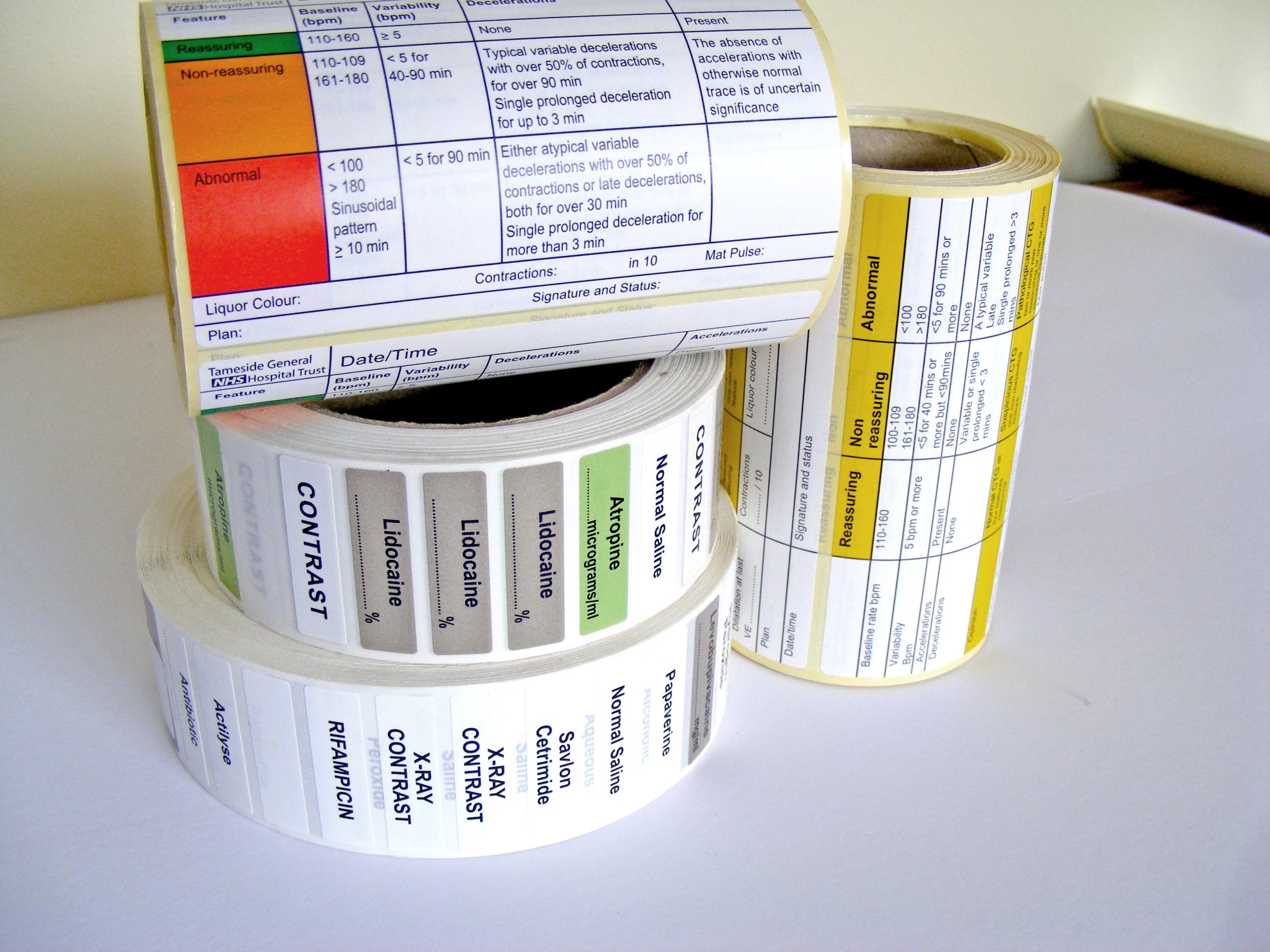Identification and Information
Patient Information: Labels on patient records, charts, and wristbands contain vital details such as patient name, date of birth, allergies, and medical history, aiding healthcare professionals in accurate patient identification and treatment.
Medication Labels: Labels on medication packaging provide essential information like drug name, dosage instructions, expiration date, and potential side effects, crucial for administering the correct treatment and preventing medication errors.
Regulatory Compliance
Regulatory Requirements: Labels on medical devices, pharmaceuticals, and equipment must comply with regulations established by relevant authorities. Compliance ensures that products meet safety standards and are appropriately labeled for use.
Tracking and Traceability
Barcoding and RFID: Labels on medical equipment often incorporate barcodes or Radio-Frequency Identification (RFID) technology for efficient tracking, enhancing inventory management, reducing errors, and facilitating tracing throughout the supply chain.
Safety and Warnings
Hazard Labels: Labels on hazardous substances or equipment communicate potential risks and safety precautions to healthcare professionals, minimising the likelihood of accidents or injuries.
Biohazard Labels: In healthcare settings, labels on materials containing biohazards indicate the presence of potentially infectious materials, promoting safe handling and disposal practices.
Medical Equipment Labels: Labels on medical devices and equipment provide critical information on usage, maintenance, and safety precautions, ensuring proper handling and operation.
Laboratory and Diagnostic Labels
Specimen Identification: Labels are crucial for accurately identifying and tracking laboratory specimens, ensuring that test results are correctly linked to the right patient.
Diagnostic Imaging: Labels on medical imaging films or electronic displays provide information about the patient, the date of the procedure, and other relevant details for proper interpretation by healthcare providers.
Record Keeping and Documentation
Medical Records: Labels play a role in organising and categorising medical records, facilitating efficient record-keeping and retrieval of patient information when needed.
Documenting Procedures: Labels may be used to document details about medical procedures, including the date, time, and individuals involved, aiding in quality control and accountability.
Regulatory Requirements: Labels on medical devices, pharmaceuticals, and equipment must comply with regulations established by relevant authorities. Compliance ensures that products meet safety standards and are appropriately labeled for use.
Summary
In summary, labels in the medical industry, including those on medical equipment, are essential for accurate identification, regulatory compliance, safety, tracking, and effective communication, contributing significantly to the overall quality and safety of patient care globally.


